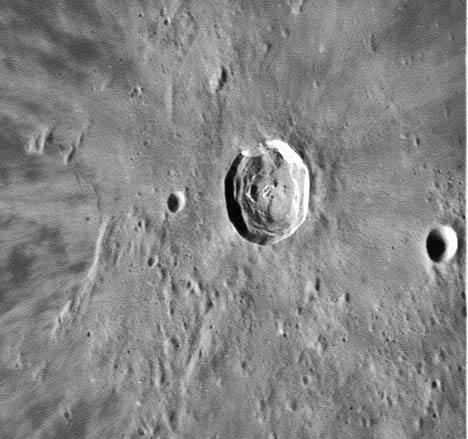February 25, 2016
Rayless Crater
Originally published May 1, 2005
Image Credit: Wes Higgins |
|
Rayless Crater Rayed craters are rayless at low illuminations, but this view of Kepler is intermediate between low and high so that both the topography and rays are visible. Kepler itself is a small (32 km diameter) and young complex crater.Its walls have collapsed and slid toward the floor, piling up both amorphous mounds and discontinous terraces. At the center of a small flat floor are a handful of central peaks. Keplers ray system differs from Tycho and some other craters in that at Kepler the rays emerge from a large bright area - perhaps 3-4 times the diameter of the crater; this seems to be an area completely covered by rays. The rubbly terrain that Kepler and its close-in rays cover is ejecta from the Imbrium basin-forming impact. Technical Details: Related Links: Yesterday's LPOD: More Jewels from the Vault Tomorrow's LPOD: A Perfect LPOD Image |
|
Author & Editor: |
COMMENTS?
Register, Log in, and join in the comments.




